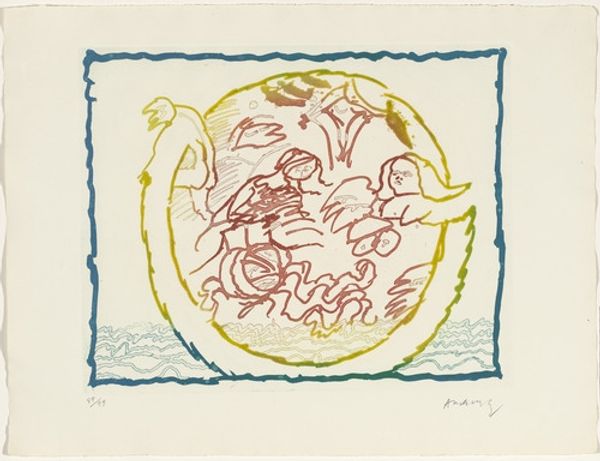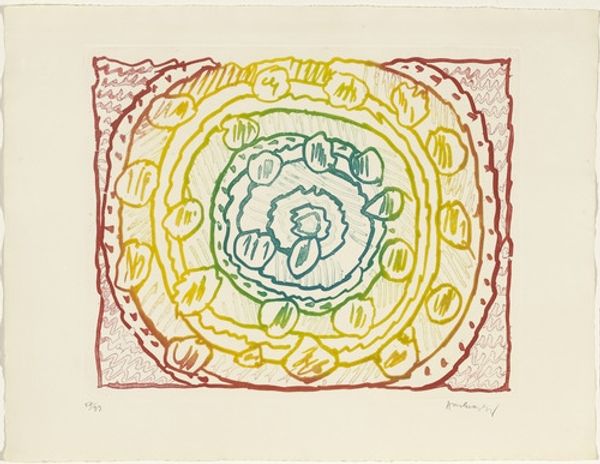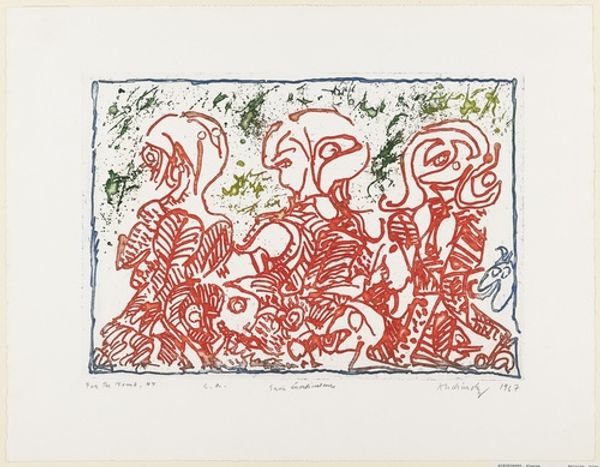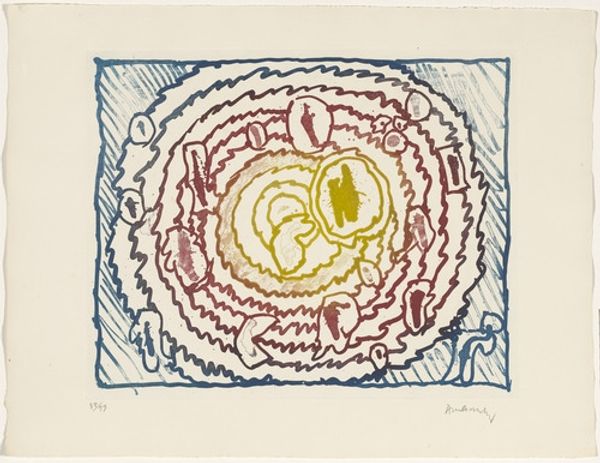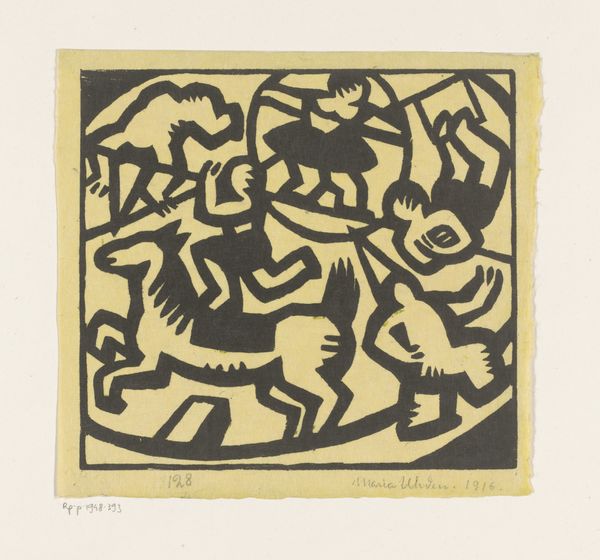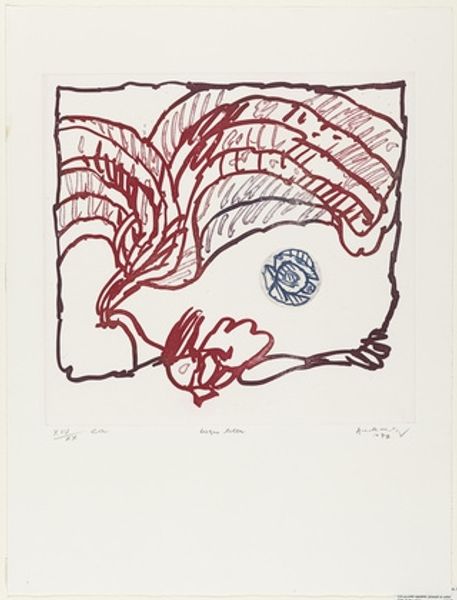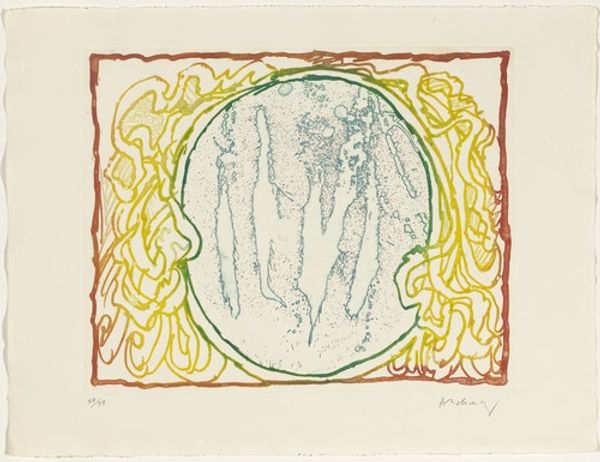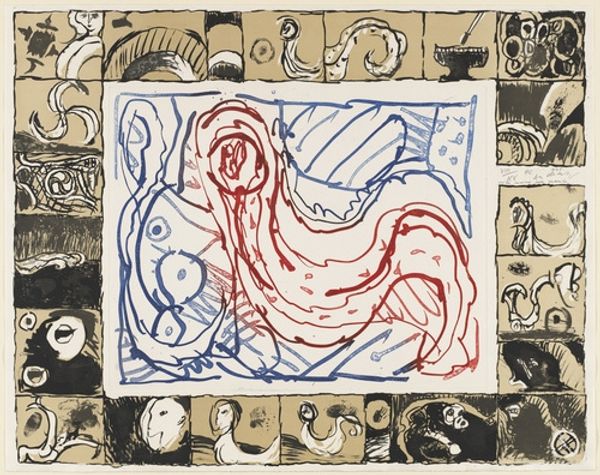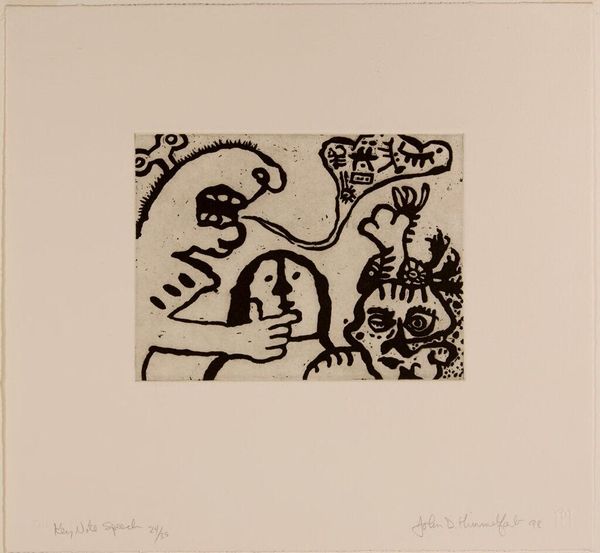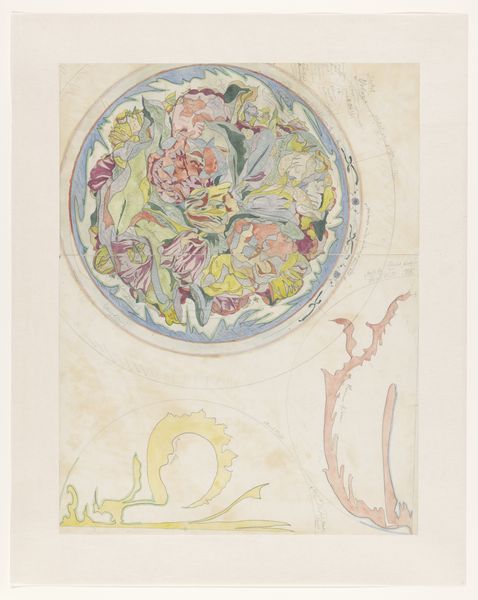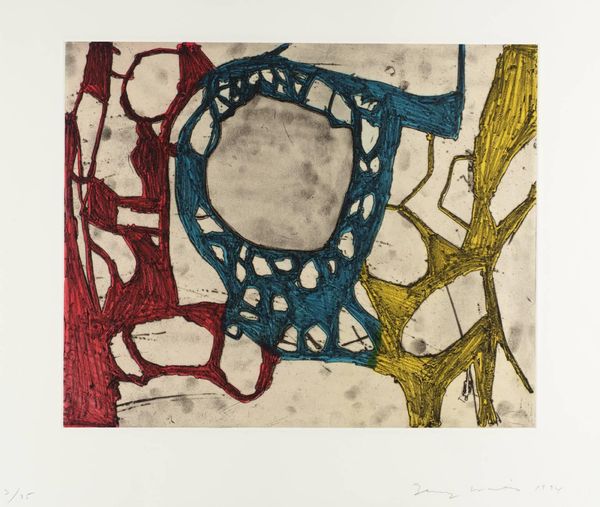
mixed-media, print, linocut
#
mixed-media
#
cobra
# print
#
linocut
#
figuration
#
linocut print
#
art-informel
#
abstraction
Copyright: Pierre Alechinsky,Fair Use
Curator: Pierre Alechinsky’s 1969 mixed media print, "Stars and Disasters," combines a linocut with vibrant color. What strikes you first? Editor: A controlled chaos. The colors feel childlike and playful, yet the composition, a circular form packed with images, hints at something more unsettling. There is something primal about the symbols that Alechinsky renders. Curator: The power of symbols can endure beyond language itself. Note how Alechinsky evokes early figuration using recurring shapes within his imagery. The overlapping lines feel like a palimpsest. The effect seems deliberately archaic, reflecting both disaster and its remembrance over time. Editor: Yes! There's a tension here between abstraction and the figurative. Is that form in the center a face? Are the surrounding shapes celestial bodies, distorted memories, or maybe psychological projections of the self during times of upheaval? It has the density and fracturedness of traumatic experience. Curator: Alechinsky, a key figure in the Cobra movement and Art Informel, taps into that deeply. Think of Cobra’s ethos, which aimed to connect with a more instinctive, less rational form of expression, particularly after the trauma of World War II. There’s a strong critique of societal structures embedded within. The contrast and combination of stars, as celestial guides, alongside symbols of disaster is a rich point to reflect on in 1969 during periods of heavy protest against the war in Vietnam. Editor: Right, the late 60s were a time of massive social and political disruption, the perfect breeding ground for images that reflect both collapse and the search for new forms of meaning. But why this visual language, these child-like symbols, as if returning to something elemental, an originary consciousness? Is it an attempt to bypass the rational mind to grasp the immensity of these "disasters"? Curator: Precisely. The choice to employ rudimentary forms echoes our earliest experiences of understanding the world and its traumas, attempting to bypass more 'civilized' modes of knowing and understanding. Editor: I leave contemplating about cultural anxieties from the past and thinking about the importance of cultural memory. I think of our current political era—do these symbols carry new meaning today? Curator: Definitely. Alechinsky reminds us how powerful imagery speaks to cultural trauma—disasters in our shared history, or even within our personal experiences—transforming them into collective narratives, continually open to new interpretations.
Comments
No comments
Be the first to comment and join the conversation on the ultimate creative platform.
